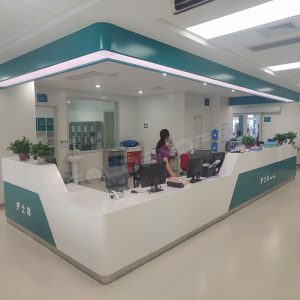The design of medical furniture involves many parameters, such as ergonomics, color aesthetics, material characteristics, functional requirements and so on. Compared with other civil furniture, medical furniture has higher requirements on safety, humanization, corrosion resistance, wear resistance and durability. So, in today’s increasingly prominent personalized medical furniture demand, how to design medical furniture in line with the market demand? According to the development trend of medical furniture design at home and abroad, the following six design principles should be followed.

First, the principle of environmental protection medical furniture is closely related to people’s health, environmental protection is the primary standard for evaluating qualified medical furniture. Therefore, the choice of medical furniture must give priority to its environmental protection. In the design stage, the environmental protection of the product should be considered from the aspects of product design, material selection, manufacturing, transportation, installation and use. Functional design of medical furniture includes material functional design and spiritual functional design. Functional design: refers to the functional design of the product itself, such as sitting, lying, leaning, storage and other functions. At the same time, consideration should also be given to the design of processing technology, industrial production and ease of handling, stacking, folding, disassembly and assembly. According to the use requirements of different departments, it should meet the special function design. Such as barrier-free design, knee pad space, medical gas logistics pipeline layout, etc. Function design: it is to satisfy people’s psychological needs and make people feel happy when using. For different areas, differentiated design can be carried out from color matching, material selection, modeling and other aspects, so that patients can relieve tension from psychological and spiritual aspects.
The majority of people entering and leaving the hospital are in poor health. Compared with healthy people and other environments, hospital furniture should be selected with greater emphasis on structural stability, firmness and absence of acute risk factors. At the same time, the design of medical furniture products must be easy to clean, in order to effectively prevent and control nosocomial infection. Adaptability principle Adaptability refers to the design of hospital furniture from the perspective of meeting the needs of the whole life cycle of medical facilities, so as to meet the needs of future hospital development. Therefore, medical furniture adopts modular and standardized design to improve the expansibility of its products, flexibly realize the splicing of different shapes, improve the production efficiency and quality of products, and save costs. Medical space is a kind of diagnosis and treatment space composed of architectural space, medical furniture and medical facilities according to medical functions. The size, lighting, temperature, ventilation, sound, type and location, color and material of each space should be properly arranged. As one of the “leading roles” of the medical space, its design should be closely combined with the overall environmental design of the hospital to meet the needs of medical work to the greatest extent, and establish a patient-centered warm, comfortable and convenient diagnosis and treatment environment.
Six, the principle of humanization
”People-oriented” design concept has become a design trend. Medical furniture is an instrument in close contact with patients in diagnosis and treatment environment, and its humanized design is particularly important. The humanized design of medical furniture is not only convenient for doctors and patients to use, but also will better improve the healing environment and diagnosis and treatment services in the hospital.
